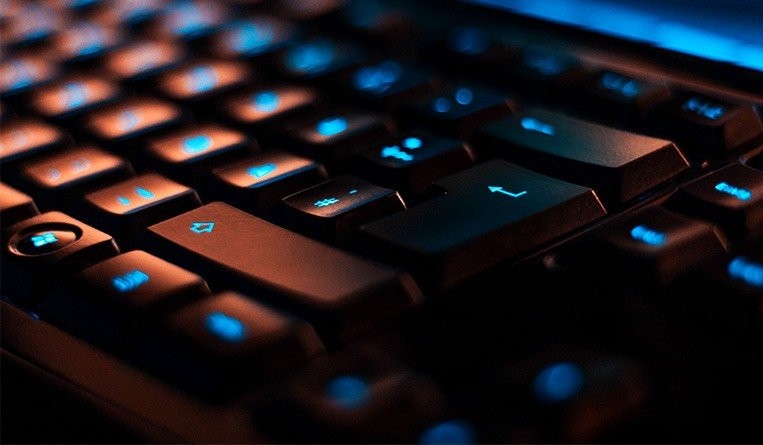Patentability of Computer Related or Implemented Inventions (CRIs or CIIs) in Singapore, Indonesia, Thailand, Vietnam, Philippines and India
30 April 2019

Patent legislation and practice in the patentability assessment of computer related or implemented inventions differ from country to country. “Computer Related Inventions” (CRIs) or “Computer Implemented Inventions” (CIIs) has been given an explicit definition in some countries such as in the Philippines and India. These countries both define CRIs or CIIs as those inventions involving computers, computer networks, or other programmable apparatus, in which one or more features are realized by means of a computer program. On the other hand, in countries such as Singapore, Indonesia, Thailand, and Vietnam, no definition is provided.
This article aims to demonstrate patentability assessment of CRIs or CIIs, based on each of the abovementioned country’s current governing rules and regulations for patents, and guidelines for patent examination (where available)
Singapore
Singapore’s patent legislations do not expressly discuss CRIs or CIIs. However, the Intellectual Property Office of Singapore’s (IPOS) Examination Guidelines for Patent Applications of May 2016 sets out general principles on assessing patentability of these type of inventions.
In Section 8.6, “considering the actual contribution of claims directed to computer-implemented inventions (CIIs), Examiners should determine the extent to which the computer (or other technical features) contributes to the invention defined in the claims”. Accordingly, “it must be established that said computer (or other technical features) defined in the claims, is integral to the invention such that the actual contribution constitutes said computer (or technical features).”
In Section 8.7, example of claims related to a “computer-implemented” business method would be deemed an invention “if the various technical features … interact with the steps of the business method (i) to a material extent; and (ii) in such a manner as to address a specific problem.” A sample of a claim having a “material extent” is given wherein the claim recites “known hardware components for implementing a business method … but if the overall combination of the hardware provides, for example, a more secure environment for performing transactions, then the hardware would be regarded to interact with the business method to a material extent to address a specific problem,” and the actual contribution of such claim which may be considered as an invention is “the use of that combination of hardware for the business method”.
On the other hand, if the technical features in the claim are recited “such that they are no more than the workings of a standard operating system … such an interaction would not be considered to be a material extent and it is apparent that no specific problem is solved”, the actual contribution thereof may be considered as the “business method”, and the claimed subject matter would not be deemed as an “invention” by merely including the term “computer-implemented” or synonymous generic term.
Indonesia
Similarly in Indonesia, CRIs or CIIs has not been given definite context. Nevertheless, Indonesia’s present patent law, the Law of the Republic of Indonesia No. 13 of July 28, 2016, on Patents (2016), explicitly excludes [in Chapter II Article 4d] “rules and methods that only contain computer programs.” This is further elaborated by the law as a computer program without any character, technical effects, and solution to problems.
Also, the law illustrates pointers of which invention may be considered patentable in this area of technology. According to the law, if the computer program has characters (or instructions) that provide technical effect and function so as to produce a solution to a problem (whether tangible or intangible), such may be patentable.
An example would be an algorithm, which is defined as “an effective method expressed as a finite sequence of instructions that have been defined to compute a function.” Given an initial state and initial input (possibly empty), these instructions gives a computation that when executed, processed through a sequence of defined limited condition(s), creates an “output” and stop at the end of the condition(s). Change of condition therein should not be deterministic, an example of which is a randomization algorithm using a random input. Another example that can be granted a patent is encrypting information by encoding or decoding such that the information cannot be deciphered by a third party.
Thailand and Vietnam
Similarly, a definition of CRIs or CIIs has not been established in Thailand and Vietnam. The governing laws in both Thailand and Vietnam, namely, Patent Act B.E. 2522 (1979) as amended by Patent Act (No. 2) B.E. 2535 (1992) and Patent Act (No. 3) B.E. 2542 (1999) [Section 9] in Thailand, and the Law on Intellectual Property [Article 59] in Vietnam, exclude computer programs per se from being protected. Hence, in Thailand, for example, a process claim containing a step realized by means of a computer program along with other important steps realized by other technical means may be deemed patentable.
The Philippines
In the Philippines, the Republic Act 8293 (IP Code) [Section 22.1 to 22.2] and the Revised Implementing Rules and Regulations for Patents (Revised IRR) [Rule 202(a) to 202(e)], exclude discoveries, mathematical methods, schemes, rules and methods of playing games or doing business, programs for computers, and etc.
The Intellectual Property Office of the Philippines released their Guidelines on the Examination of Information Communications Technology (ICT) and Computer-Implemented Inventions in January 2018. These guidelines define CRIs or CIIs as “one which involves computers, computer networks or other programmable apparatus whereby prima facie one or more of the features of the claimed invention are realized by means of a program or programs.” The purpose of the guidelines is to assist patent examiners in the examination of patent applications for inventions in ICT and CIIs. The guidelines suggest that substantive sense of CIIs is no different than other types of inventions.
The important feature of these guidelines is a subject matter eligibility test for CIIs. Such test includes determining whether a claim with a combination of excluded subject matter and technical means (or hardware) constitutes a “technical character.” Technical character is considered as “the kind that involves a technical teaching (i.e., an instruction addressed to a skilled person as to how to solve a particular technical problem using particular technical means).” Subject matter eligibility test and guide steps/questions/ factors in determining thereof [in Section 4.3 Page 11, Step 3 Page 14 to Step 4 Page 15], examples of the same [in Section 6], and other factors such as assessing the novelty or inventive step (with illustrative examples) of this type of invention [in Sections 7 to 8], have been comprehensively laid in the guidelines.
India
In India, the Patents (Amendment) Act, 2002 [Section 3] excludes a “mathematical method,” a “business method,” “computer programme per se,” or “algorithms.”
India’s Revised Guidelines for Examination of CRIs (of 2017) consciously defines CRIs as “inventions which involve the use of computers, computer networks or other programmable apparatus and include such inventions having one or more features of which are realized wholly or partially by means of a computer programme or programmes.” The revised guidelines was intended for uniformity and consistency in examination of CRIs, and to bring out clarity in the exclusions under Section 3(k) of the Patents Act, for expeditious examination of CRIs by the Indian Patent Office. The revised guidelines also augmented definitions to the Patents Act, for the above excluded subject matters.
The revised guidelines state that examination procedure of CRIs is same as with other inventions. However, it focuses on the determination of the subject matter that relates to one of the excluded categories. It also highlighted that claims must be examined on its “substance” [in Section 4.4.4]. It also set forth pointers on how to determine if a means plus function claims of CRIs are not patentable [in Section 4.4.5], where claims directed to a mathematical method are not patentable contrary to claims with mathematical formula present that may be patentable [in Section 4.5.1], where claims directed to subject matter essentially carrying out a business method and thus are not patentable [in Section 4.5.2]. Examples where claims are directed to “computer programme” per se or “algorithms” [in Section 4.5.3 to 4.5.4] and hence are not patentable were also shown.
Conclusion
Patent legislation and procedures for CRIs and CIIs in each jurisdiction have similarities, differences, and salient features. To date, the Philippines and India recently updated their procedures for determining the patentability of such inventions, allowing a room for subject matters in grey area to be assessed if they still possess any patentable aspect. On the other hand, no amendments with regards to CRIs and CIIs have been made to the rules and procedures of other countries. As CRIs and CIIs rapidly advance with time, it is fascinating to observe how these laws and policies per country will adjust so as to adapt with these fast phasing fields. It is also interesting how rules and procedures for these areas will be attuned to allow protection for cutting edge technologies.
ABOUT THE AUTHOR
Coleen May Yusores is an electronics engineer with a Master’s of Science degree in engineering management, and she specializes in patent drafting, filing, searches, and prosecution for clients at Mirandah Asia.








